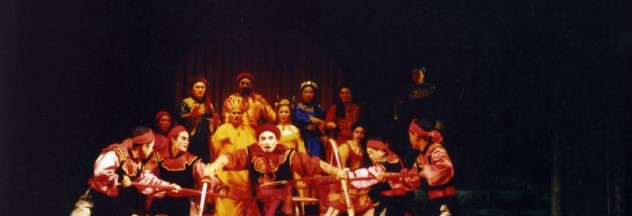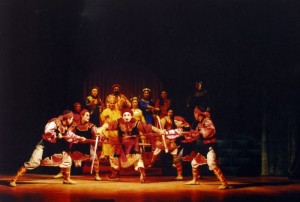Hat Boi opera, or more commonly known as tuong, is a several hundred year old art genre in Vietnam which is considered one of the most unique classic cultural class because of its purpose and ability to express spirituality.
Boi was imported into Vietnam by a Chinese singer. But it was originally created by Dao Duy Tu (1572-1634) of Dao Son Commune, Tinh Gia, Thanh Hoa who initially thought of the singing style after being disallowed from taking national exams. Born in a family of singers and therefore naturally gifted in the field of art, he then decided to work in the Nguyen Dynasty wherein he became a poet, artist, tactician and diplomat of Cochinchine. He shared his creation with the Binh Dinh, Cochinchine residents by teaching the Boi in their native tongue.
Boi singing thrived during the Nguyen reign from 1802-1945. It transformed into a one-of-a-kind genre called “Hue Court Tuong.” Between 1845-1917, King Tu Duc, Dao Tan played an important role in developing Hat Boi into an intellectual and royal art style. He set up a Hat Boi workshop in Binh Dinh called “The Pavilion of Theatrical Studies” and composed a number of plays which became popular and even performed up to today. The fall of the Nguyen rule also signalled the end of Hat Boi during that time. It was not until just recently that the historical opera singing was revived in (former) Hue Citadel.
Everything in a Hat Boi presentation is symbolic. From the backdrop to the costumes, make up, gestures and vocal styles, every single detail represents something. The stage is a simple pedestal covered by a curtain and two other smaller ones used as entrance doors by the actors, but it is a reflection of life. The background is simple and conventional yet symbolizes time and space. The artists’ movements follow a strict set of rules of expression in order to successfully convey to the audience the message of the performance.
Boi comes in two forms: folk and royal. In the former, Boi singing is presented purely as entertainment and recreation. In the latter, subtle emotions are used to express the essence of the performance accompanied by formal plays and intricate costumes. Boi is composed of a dozen plays performed the whole year round so actors are required to be skilled in the art of singing, dancing and acting.
Hat Boi illustrates aesthetic and philosophical aspects, using the varied human emotions in order to depict the present and the future. It aims to decipher the complexity of humanity as a whole. But Hat Boi goes even beyond art and music. Perhaps more than anything else, it tells the story of Vietnam’s historical, social, cultural and religious values. Hat Boi has succeeded in representing the essence of Vietnam’s culture.

